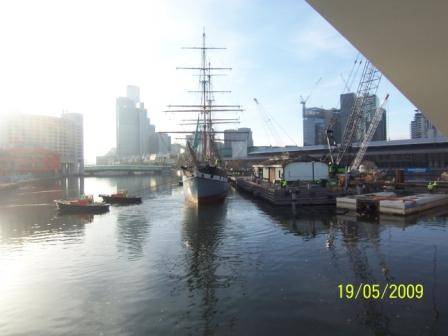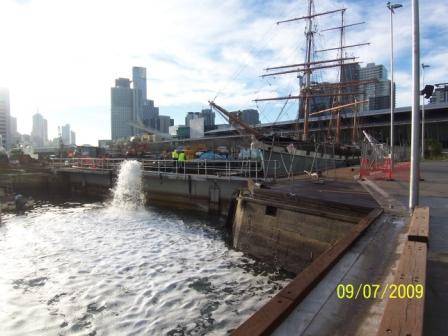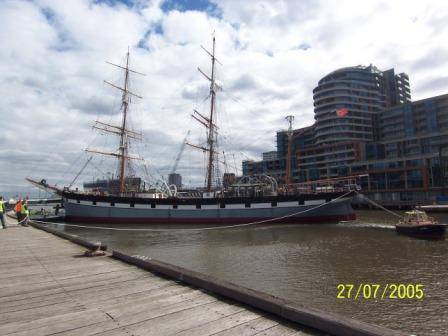| Back to search results » | Back to search page » |
|
Polly Woodside
LocationDuke's Dock, 2A Clarendon Street,, SOUTHBANK VIC 3006 - Property No B2775
File NumberB2775LevelState |
|
Statement of Significance
What is significant? The Polly Woodside was built in Belfast in 1885 by Workman Clark & Co Ltd for William J Woodside, and operated as a cargo vessel, carrying coal, nitrate and wheat between England and South America and also visiting North America, Africa, Asia and Australia (Newcastle, N S W). In 1904 the ship was sold to the first of several New Zealand owners and renamed Rona. Until 1921, she traded between ports in Australia, New Zealand and the west coast of North America. After being de-rigged in Sydney, Rona was towed to Melbourne in 1925 and used as a coal hulk, re-fuelling ships in the port, until being temporarily requisitioned by the Royal Australian Navy during the Second World War. Towed to New Guinea, she served as a refuelling barge for navy ships before returning to her previous role in the Port of Melbourne. By 1964 there were no coal burning ships using the port and Rona's working life was over and she seemed destined to be scrapped. Instead the hulk was purchased by the National Trust of Australia (Victoria) in 1968 for one cent and work began in 1972 to transform her back to her days as a sailing ship. Given back her original name, Polly Woodside, the ship opened to the public in January 1978 in her permanent home, the 1875 Duke's & Orr's Dry Dock at Southbank. The majority of the restoration work has been done by volunteers and in 1988 their contribution was recognised when Polly Woodside was awarded the World Ship Trust Medal for achievement in the preservation of maritime heritage. The Polly Woodside is a three-masted iron barque with a clipper bow and rounded counter-stern. The hull is of riveted wrought iron with clinker built (raised and sunken) plates. The three lower masts are of steel, the topmasts, topgallants and royals are of wood. The ship's registered gross tonnage was 678 tons. The hull length is 59 m (192 ft), overall length is 70 m (230 ft), beam 9 m (30 ft) and draft laden 4 m (14 ft). The main mast is 37.2 m high. The estimated area of sail when all sails are set is 1110 sq metres (12,000 sq ft). The ship has been restored, but is not currently in sailing condition. How is it significant? The Polly Woodside is of historical, scientific (technological) and social significance. Why is it significant? The Polly Woodside is of scientific (technological) significance as a rare, and among the best in the world, surviving example of a late nineteenth century barque rigged, iron-hulled, ocean-going trading ship. The Polly Woodside is of historical significance for being representative of the type of ship that that serviced Victoria through the inter-colonial and international trade in the late nineteenth and early twentieth century. These ships were once very common as the kind of vessels which carried most of the world's bulk cargo in the late nineteenth and early twentieth century. As they became obsolete to steamships their numbers diminished and the Polly Woodside is now only one of less than ten known surviving examples world wide. The Polly Woodside is of historical significance for its long association with the Port of Melbourne, first as a trading ship, then as a coal hulk and lately as part of Melbourne Maritime Museum. The Polly Woodside is of historical and social significance for its links to Victoria's maritime history and as being representative of the many thousands of ships that linked Victoria with the rest of the world through trade and immigration throughout the latter half of the nineteenth century. The Polly Woodside is of social significance for the public support it received for her preservation and conservation; for her contribution to the development of historical maritime skills and as a popular tourist destination since 1978. Revised statement: 31/03/2009.
Group
Maritime Industry
Category
Other - Maritime Industry






